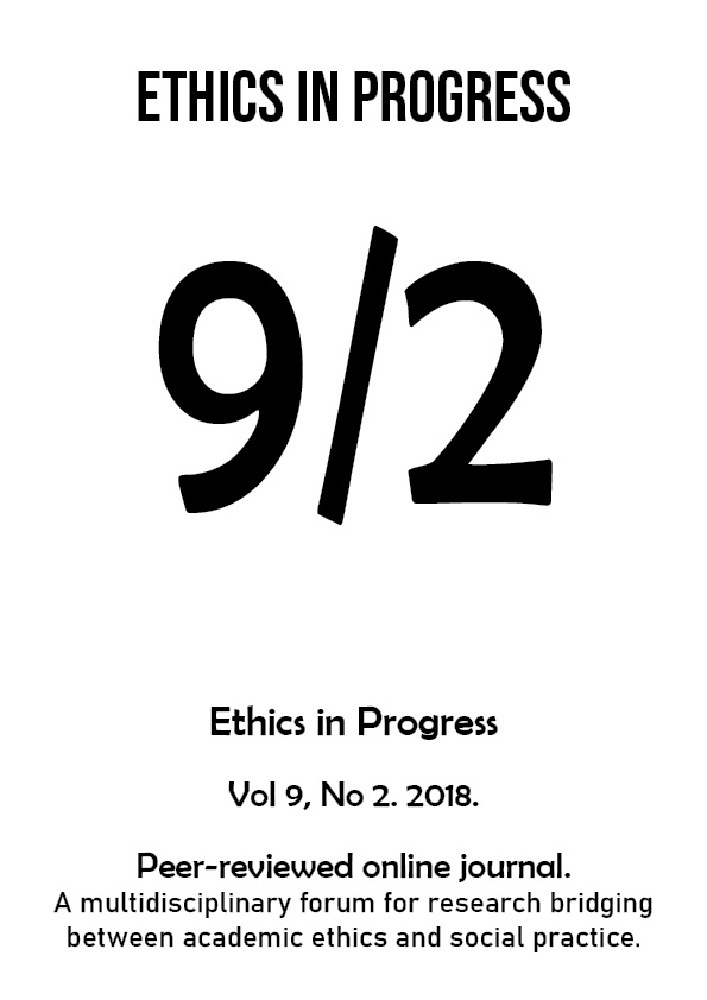Abstract
What does being moral mean? On one hand people may justify mercy killing as sparing omeone’s suffering, but on the other hand they are still, in-fact, taking another’s life. According to Lind’s theory of moral competence (2008), it is based on consistent utilization of moral principles. Although common sense tells us that people’s affective states and levels of empathy may explain the differences, there is little direct evidence. The purpose of this study was to fill this gap by examining the relative contribution of empathy and affective state to moral competence. Results of the study revealed that although perspective taking and negative affective state were both significant predictors of moral competence, perspective taking was a stronger contributor. This suggests that the next time you deliberate over a moral dilemma (e.g., euthanasia), you should try understanding another person’s perspective rather than feeling empathy to make the best moral judgment.
References
Batson C. D. & Powell A. A. 2003. “Altruism and Prosocial Behavior”, in T. Millon & M. J.
Lerner (Eds.), Handbook of Psychology: Personality and Social Psychology, Vol. V. Hoboken, NJ: Wiley & Sons (463-84).
Bechara A., Damasio H., & Damasio A. 2000. “Emotion, Decision Making, and the Orbitofrontal Cortex.” Cerebral Cortex 10(3):295-307.
Berenguer J. 2010. “The Effect of Empathy in Environmental Moral Reasoning.” Environment and Behavior 42(1):110-34.
Bodenhausen G. V., Mussweiler T., Gabriel S., & Moreno K. N. (in press). “Affective Influences on Stereotyping and Intergroup Relations,” in J. P. Forgas (Ed.), Handbook of Affect and Social Cognition.
Davis M. H. 1980. “A Multidimensional Approach to Individual Differences in Empathy.” JSAS Catalog of Selected Documents in Psychology 10:85.
Davis M. H. 1983. “Measuring Individual Differences in Empathy: Evidence for a Multidimensional Approach.” Journal of Personality and Social Psychology 44(1):113-26. doi:10.1037/0022-3514.44.1.113.
Dovidio J. F., Gaertner S. L., Isen A. M., & Lowrance R. 1995. “Group Representations and Intergroup Bias: Positive Affect, Similarity, and Group Size.” Personality and Social Psychology Bulletin 21(8):856-65. doi:10.1177/014616729521009.
Eisenberg N. 2000. “Emotion, Regulation, and Moral Development.” Annual Review of Psychology 51:665-97.
Eisenberg N. & Miller P. A. 1987. “The Relation of Empathy to Prosocial and Related Behaviors.” Psychological Bulletin 101(1):91-119.
Eisenberg N., Zhou Q., & Koller S. 2001. “Brazilian Adolescents’ Prosocial Moral Judgment and Behavior: Relations to Sympathy, Perspective Taking, Gender-Role Orientation, and Demographic Characteristics.” Child Dev. 2001 Mar-Apr; 72(2):518-34.
Frijda N. H. 1988. “The Laws of Emotion.” American Psychologist 43(5):349-58. doi:10.1037/0003-066X.43.5.349.
Gross J. J. 1999. “Emotion and Emotion Regulation,” in L. A. Pervin & O. P. John (Eds.), Handbook of Personality: Theory and Research. New York: Guilford Press (525-52).
Haidt J. 2001. “The Emotional Dog and Its Rational Tail: A Social Intuitionist Approach to Moral Judgment.” Psychological Review 108(4):814.
Hume D. 17511. Enquiry Concerning the Principles of Morals; selections in Raphael, Vol. II (1991).
Kant I. 17851/1998. Groundwork for the Metaphysics of Morals. New York: Cambridge University Press.
Kohlberg L. & Kramer R. 1969. “Continuities and Discontinuities in Childhood and Adult Moral Development.” Human Development 12(2):93-120.
Kohlberg L. 1971. “Stages of Moral Development.” In C. M. Beck, B. S. Crittenden, & E. V. Sullivan (Eds.), Moral Education. Toronto: University of Toronto Press.
Lee Won Dong. 2010. “An Empirical Research on the Moral Judgment Competence of Korean Young Students: Focused on Comparing P-index of KDIT and C-index of MJT.” Doctoral dissertation, Department of Ethics Education, Teachers College, Gyeongsang National University, South Korea.
Liaquat A. W. 2013. “Effect of Dogmatic Religiosity and Educational Environment on Moral Judgment Competence.” Unpublished dissertation, Dept. of Psychology, International Islamic University Islamabad.
Lind G. 2008. “The Meaning and Measurement of Moral Judgment Competence. A Dual-Aspect Model,” in D. Fasko, Jr. & W. Willis (Eds.), Contemporary Philosophical and Psychological Perspectives on Moral Development and Education. Cresskill: Hampton Press (185-220).
Lind G. 2014, March 24. “Moral Competence Test (MCT),” from http://www.unikonstanz.de/ag-moral/mut/mjt-engl.htm.
Menon U. & Schweder R. A. 1998. “The Return of the »White Man’s Burden«: The Moral Discourse of Anthropology and the Domestic Life of Hindu Women,” in R. A. Schweder (Ed.), Welcome to Middle Age! (and Other Cultural Fictions). Chicago: University of Chicago Press (139-88).
Pizarro D. 2000. “Nothing More Than Feelings? The Role of Emotions in Moral Judgment.” Journal for the Theory of Social Behaviour 30(4):355-75. doi:10.1111/1468-5914.00135.
Schwarz N. & Bless H. 1991. “Happy and Mindless, But Sad and Smart? The Impact of Affective States on Analytic Reasoning,” in J. P. Forgas (Ed.), Emotion and Social Judgment. Oxford: Pergamon (55-71).
Schweder R., Much N., Mahapatra M., & Park L. 1998. “The »Big Three« of Morality (Autonomy, Community, and Divinity), and the »Big Three« Explanations of Suffering, As Well,” in A. Brandt & P. Rozin (Eds.), Morality and Health. Stanford, CA: Stanford University Press (119-69).
Skoe E. A. 2010. “The Relationship between Empathy‐Related Constructs and Care‐based Moral Development in Young Adulthood.” Journal of Moral Education 39(2):191-211. doi: 10.1080/03057241003754930.
Tangney J. P. 1991. “Moral Affect: The Good, the Bad, and the Ugly.” Journal of Personality and Social Psychology 61(4):598-607. doi:10.1037/0022-3514.61.4.598.
Tangney J. P., Stuewig J., & Mashek D. J. 2007. “Moral Emotions and Moral Behavior.” Annual Review of Psychology 58:345-72.
Watson D., Clark L. A., & Tellegen A. 1988. “Development and Validation of Brief Measures of Positive and Negative Affect: The PANAS Scales.” Journal of Personality and Social Psychology 54(6):1063-70. doi:10.1037/0022-3514.54.6.1063.
Wheatley T. & Haidt J. 2005. “Hypnotic Disgust Makes Moral Judgments More Severe.” Psychological Science 16(10):780-4.




